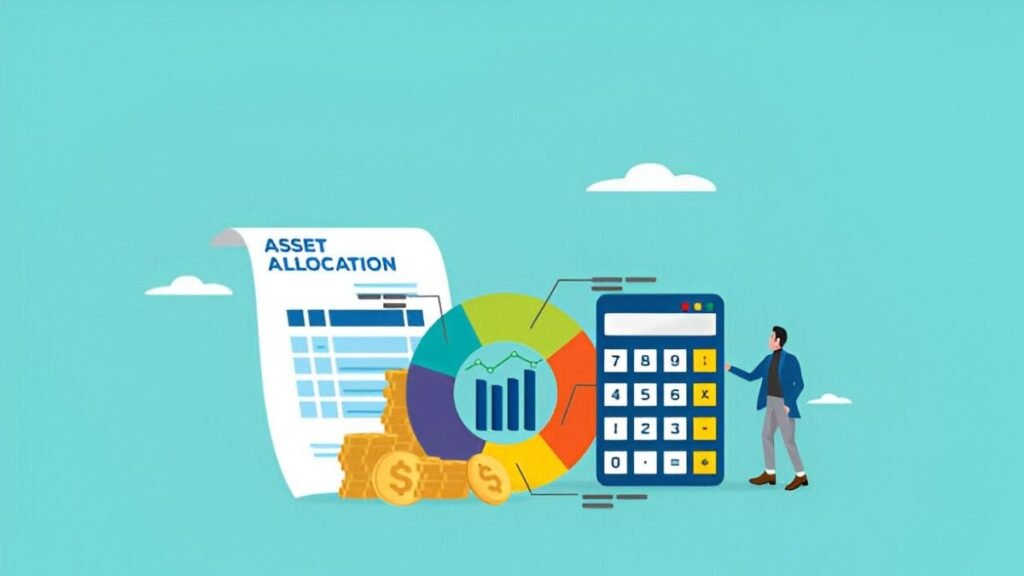As a finance expert, I often see investors struggle with managing multiple accounts—brokerage, retirement, savings, and more. The challenge lies not just in tracking these accounts but in optimizing asset allocation across them. This is where an asset allocation account aggregator comes into play. In this guide, I break down how these tools work, their mathematical foundations, and why they matter for long-term wealth building.
Table of Contents
What Is an Asset Allocation Account Aggregator?
An asset allocation account aggregator is a financial tool that consolidates data from multiple investment accounts (e.g., 401(k), IRA, taxable brokerage) and provides a unified view of your portfolio’s allocation. Unlike traditional portfolio trackers, these platforms use algorithms to rebalance assets efficiently across accounts while considering tax implications, risk tolerance, and investment goals.
Why This Matters for US Investors
The average American has 3.5 different investment accounts. Managing them manually leads to:
- Suboptimal diversification – Overlapping holdings in different accounts.
- Tax inefficiencies – Selling assets in taxable accounts when tax-advantaged options exist.
- Rebalancing difficulties – Manually adjusting allocations is time-consuming.
An aggregator solves these problems by automating asset allocation while keeping tax drag minimal.
The Mathematics Behind Asset Allocation
Modern Portfolio Theory (MPT) and Aggregation
Harry Markowitz’s MPT states that an optimal portfolio maximizes return for a given risk level. The expected return E(R_p) of a portfolio is:
E(R_p) = \sum_{i=1}^n w_i E(R_i)Where:
- w_i = weight of asset i
- E(R_i) = expected return of asset i
The portfolio risk (standard deviation) \sigma_p is:
\sigma_p = \sqrt{\sum_{i=1}^n \sum_{j=1}^n w_i w_j \sigma_i \sigma_j \rho_{ij}}Where:
- \sigma_i, \sigma_j = standard deviations of assets i and j
- \rho_{ij} = correlation coefficient between assets i and j
An aggregator optimizes w_i across all accounts to minimize risk while targeting desired returns.
Tax-Adjusted Asset Location
Not all accounts are taxed equally. Placing high-growth assets (e.g., stocks) in taxable accounts and bonds in tax-deferred accounts can improve after-tax returns. The after-tax return R_{after-tax} is:
R_{after-tax} = R_{pre-tax} \times (1 - t_{cg})Where:
- t_{cg} = capital gains tax rate
An aggregator factors this in when suggesting allocations.
How Account Aggregators Work: A Step-by-Step Breakdown
1. Data Aggregation
The tool connects to financial institutions via APIs (Plaid, Yodlee) and pulls:
- Holdings
- Account types (taxable vs. tax-advantaged)
- Transaction history
2. Risk Assessment
Using questionnaires, it determines your:
- Risk tolerance (1 to 10 scale)
- Time horizon
- Financial goals
3. Optimization Algorithm
The system computes the best allocation using:
- Mean-variance optimization
- Tax efficiency rules
- Rebalancing thresholds
4. Execution
Some aggregators auto-rebalance, while others provide manual trade instructions.
Comparing Top Asset Allocation Account Aggregators
| Feature | Personal Capital | Empower | Morningstar |
|---|---|---|---|
| Account Linking | Yes | Yes | Limited |
| Tax Optimization | High | Medium | Low |
| Rebalancing | Manual | Auto | Manual |
| Cost | Free (AUM fees) | Free | Paid |
Real-World Example: Optimizing a $500K Portfolio
Suppose you have:
- $200K in a 401(k) (tax-deferred)
- $200K in a taxable brokerage
- $100K in a Roth IRA (tax-free)
Without an aggregator:
- You might hold 60% stocks and 40% bonds in each account, leading to tax inefficiencies.
With an aggregator:
- Stocks go into the Roth IRA (tax-free growth).
- Bonds go into the 401(k) (tax-deferred, lower growth).
- Tax-efficient ETFs go into the taxable account.
This could save thousands in taxes over a decade.
Limitations and Risks
- Security concerns – Sharing login credentials with third parties.
- Algorithmic biases – Over-reliance on historical data.
- Costs – Some charge high AUM fees.
Final Thoughts
Asset allocation account aggregators simplify complex portfolio management. By automating tax-efficient rebalancing, they help investors stay disciplined. However, they’re not a substitute for financial literacy—understanding the underlying principles ensures you use them effectively.




